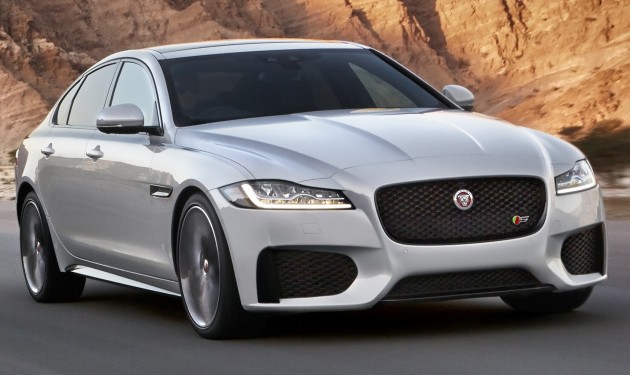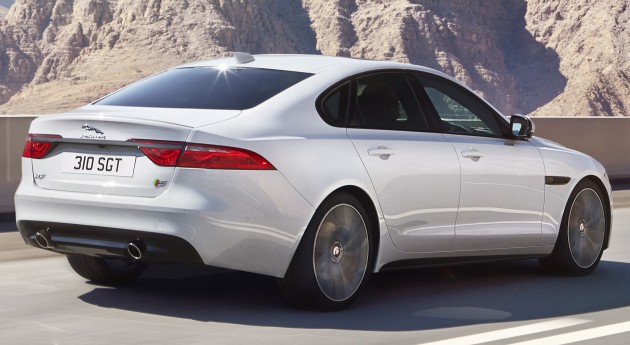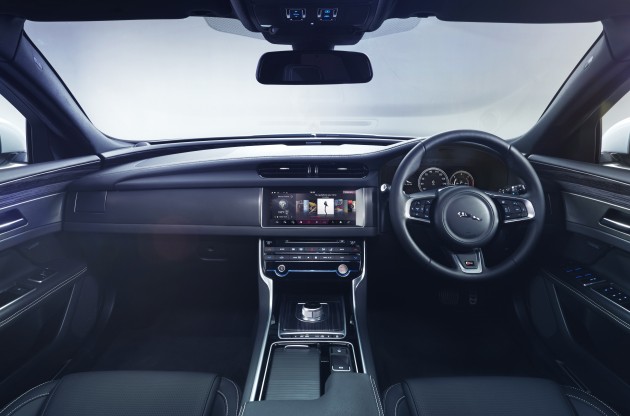
Say hello to the all-new 2016 Jaguar XF, unveiled to the world ahead of its debut at the 2015 New York International Auto Show (NYIAS). Lighter, more spacious, more powerful and more fuel efficient than ever before, the second-generation executive sedan – which goes on sale in the autumn – will be hoping to take on the competition on more than just good looks this time around.
Certainly, the previous model was quite stunning to look at – particularly in facelifted form – but this takes it to the next level. Sharing much of its aesthetic with the smaller XE, the new car features a larger, more prominent grille, slimmer headlights (full-LED units are offered for the first time on a Jaguar), some sharper definition to its flanks and an F-Type-inspired rear end.
A glasshouse that stretches further back allows the new XF to keep its characteristic coupé-like roofline, while no doubt addressing the outgoing model's lack of rear headroom. Indeed, rear accommodation has been a focus on the new car – although it's 7 mm shorter and 3 mm lower than before, the 2,960 mm wheelbase is actually 51 mm longer, providing what Jaguar says is class-leading rear space.

As we've seen before, the interior is also heavily inspired by its smaller sibling. The novel hidden-until-you-want-them swivelling centre vents have been ditched (the ones on the side have been retained) for more conventional items atop an enormous 10.2-inch touchscreen that controls the new quad-core InControl Touch Pro infotainment system. There's also a new 12.3-inch TFT LCD virtual instrument cluster, taken from the XJ.
The XE's wide central tunnel also looks to have been carried over, but with a new roll-up cover over the cupholders. And of course, who can forget the rotary gear selector that debuted in the original XF?
Built on Jaguar's mostly aluminium modular architecture (the second model after the XE) the new XF is up to 190 kg lighter than before – the company claims it is 80 kg lighter than the next competitor – despite torsional stiffness having increased by as much as 28%. Also carried over from the XE are front double wishbone and rear Integral Link suspension (with optional Adaptive Dynamics dampers), as well as electric power steering.

This is allied to a range of new engines, beginning with a 2.0 litre turbodiesel from the new Ingenium family. Two outputs – 163 PS/380 Nm and 180 PS/430 Nm – are on offer, the former delivering fuel consumption of under 4.0 litres per 100 km and CO2 emissions of 104 grams per kilometre, figures that are said to be class-leading. Both oil-burners are mated to either a six-speed manual or an eight-speed automatic transmission.
From there onwards, the auto is the sole transmission choice, mated to either a 240 PS/340 Nm 2.0 litre turbocharged and direct-injected petrol four-pot, an updated 300 PS/700 Nm 3.0 litre biturbo diesel V6 or the F-Type's 3.0 litre supercharged V6 in either 340 PS/450 Nm or 380 PS/450 Nm outputs. Fire-breathing R and R-S variants will surely come later on.
Available in certain markets is a torque-on-demand all-wheel drive system with F-Type-derived Intelligent Driveline Dynamics (IDD), equipped with a chain-driven transfer case that is lighter, quieter and more efficient than a regular gear-driven unit. Rear-wheel drive models instead come with All-Surface Progress Control, a sort of low-speed cruise control that ensures optimum traction in adverse conditions.



No comments:
Post a Comment